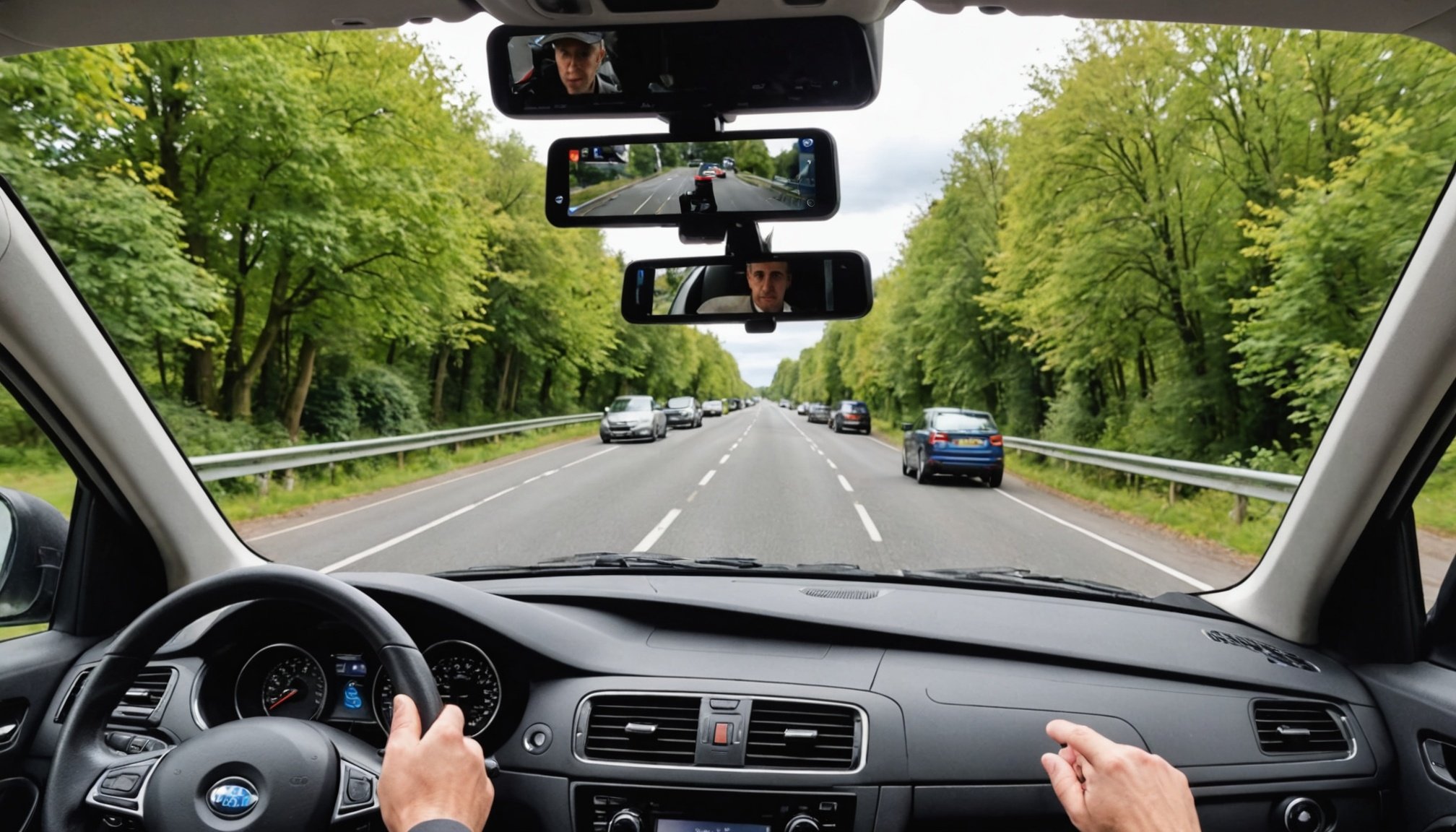Understanding the Importance of 360-Degree Dashcams
The benefits of a 360-degree dashcam are manifold, particularly in enhancing safety and preventing accidents. These devices provide a comprehensive view of a vehicle’s surroundings, thereby reducing blind spots and helping motorists make more informed decisions on the road. By capturing footage from all angles, drivers can effectively track nearby vehicles, pedestrians, and cyclists, greatly mitigating the risk of collisions.
Comprehensive surveillance is another key benefit, offering robust security solutions. A 360-degree dashcam acts as a vigilant observer, monitoring the vehicle 24/7. This becomes invaluable in high-crime areas where the chances of theft or vandalism are higher. The dashcam records any suspicious activity even when the vehicle is parked, serving as a deterrent and a tool for evidence collection.
This might interest you : Mastering your uk-made suv: essential strategies to enhance stability control for optimal performance
Recording incidents is crucial for insurance claims. In the event of an accident, footage captured by a 360-degree dashcam can be pivotal in establishing fault or innocence. This can expedite claim processes, reducing hassle and financial losses for the driver. Overall, the adoption of 360-degree dashcams offers a practical approach to enhancing safety, providing security, and facilitating evidence gathering.
Selecting the Right 360-Degree Dashcam
Choosing the best dashcam models for your vehicle involves careful consideration of various key features. First, focus on video quality and night vision capabilities. A dashcam with superior video resolution ensures clearer recordings, which is crucial for reviewing incidents. Night vision is particularly beneficial for low-light conditions.
Topic to read : Boost your vehicle”s security: a comprehensive guide to installing a dashcam in your british car
Equally important is the device’s storage capacity. Consider models that support large memory cards or come with cloud storage options. This ensures continuous recording without the frequent need for maintenance. Connectivity features, such as GPS and Wi-Fi, allow easy access and transfer of footage, enhancing the dashcam’s utility.
Budget is another critical factor in selecting the right dashcam. While high-end models offer advanced features, there are budget-friendly options that provide excellent value for money. Research and compare the available models against your needs and financial considerations.
For British vehicles, some recommended 360-degree dashcam models include those designed specifically to fit seamlessly with British vehicle specifications. These models often come with instructive manuals and guidelines, ensuring ease of use and installation. By prioritising these aspects, you can invest in a dashcam that fulfills your requirements effectively.
Compatibility with British Vehicles
Understanding dashcam compatibility within UK vehicles is pivotal for ensuring optimal performance. British vehicles often come with distinct specifications that can affect dashcam installation and operation. Factors such as windscreen angle, vehicle electrics, and existing onboard systems can all influence compatibility. It’s crucial to select models tailored for these variances.
Popular brands like Ford, Vauxhall, and MINI have bespoke requirements. Compatibility with these models might demand particular mounting kits or wiring harnesses, specific to the unique structures of British vehicles. This is especially true for 360-degree dashcams, where panoramic views must not be obstructed by design quirks.
Detailed instructive manuals and comprehensive manufacturer guidelines are invaluable resources. These provide step-by-step instructions and compatibility advice, ensuring users can install their dashcams effortlessly. Clear guidance can prevent common installation errors and optimize device performance.
Finally, while some general models might offer basic functionality, investing in dashcams with UK-specific adaptations can significantly enhance safety and usability. Choosing compatible equipment not only simplifies installation but also maximizes the dashcam’s efficiency, offering peace of mind with every drive.
Step-by-Step Installation Guide
Properly installing a dashcam ensures optimal performance and longevity. Here’s a comprehensive guide to facilitate a smooth setup:
Preparation Before Installation
Begin by gathering necessary tools such as a screwdriver, pry tools, and cleaning cloths. Also, perform pre-installation checks on your vehicle’s fuse box location and power outlet accessibility. Clean your windscreen to ensure a clear, adhesive surface.
Wiring Diagrams and Installation Steps
-
Positioning the Dashcam: Identify an unobstructed spot where the dashcam can capture a full view. Secure it with adhesive pads or suction cups.
-
Routing Power Cables: Conceal the cables by tucking them along the headliner and down the side pillar using a pry tool.
-
Connecting to Power: Use the fuse box for a tidy setup. Refer to the vehicle’s manual for fuse box access, and use a fuse tap for connecting. Ensure connections are secure to prevent power issues.
Finalizing the Installation
Once installed, verify that the dashcam mount is firm. Power on the device and test all features, including night vision and GPS. Ensure that video quality meets your expectations, adjusting settings as necessary.
Troubleshooting Common Issues
Even with the best preparation, you might face some common dashcam troubleshooting challenges. It’s essential to address these problems promptly to ensure the device operates effectively.
Common installation mistakes can often cause headaches. If the dashcam fails to power on, it could be due to a loose connection in the fuse box. Double-check all wiring connections and ensure the fuse tap is correctly secured to avoid this issue. Additionally, unstable mounts may cause shaky footage, so ensure your dashcam is firmly attached to the windshield.
Connectivity issues can also arise, particularly with models featuring GPS or Wi-Fi. If your dashcam isn’t connecting to a smartphone or displaying location data, resetting the device could restore connectivity. Check both the dashcam’s software settings and your phone’s network connections.
Understanding error messages can save time and stress. Common alerts, like “memory card full” or “format error,” often occur. Regularly clear old footage or format the SD card to maintain storage efficiency. If the dashcam isn’t recording, ensure the memory card is not locked and is compatible. By addressing these issues promptly, you enhance the dashcam’s performance and reliability.
Legal Considerations for Dashcam Use in the UK
Navigating the UK dashcam regulations is crucial for any responsible driver employing these devices. Understanding these laws ensures that dashcam use complies with legal standards, safeguarding both the driver and recorded subjects.
Overview of UK Laws Regarding Dashcam Use
In the UK, dashcams are perfectly legal but must adhere to certain conditions. For instance, they should not obstruct the driver’s view, complying with the Road Vehicles (Construction and Use) Regulations 1986. It’s essential that installation does not interfere with vehicle operation or safety.
Privacy Considerations When Recording on the Road
Dashcams capture more than just road footage, often including pedestrians or other vehicles’ interiors, raising privacy considerations. Drivers are advised to use devices responsibly, ensuring recordings are used only for legitimate purposes like insurance claims or police reports.
Importance of Adhering to Data Protection Laws
The General Data Protection Regulation (GDPR) mandates that any personal data captured by dashcams should be handled responsibly. This means securing footage, especially if shared with third parties, and retaining recordings only for as long as necessary. Failing to adhere can result in legal consequences. Understanding these elements empowers drivers to use dashcams properly while respecting others’ privacy.
Personal Anecdotes and Case Studies
Dashcam user experiences provide valuable insights into the practical benefits and challenges of using these devices. Real-life examples illustrate how 360-degree dashcams enhance safety and surveillance, demonstrating their importance on the road.
One user’s experience involved capturing crucial evidence during a minor collision. The dashcam footage clearly showed the events leading up to the accident, helping to swiftly resolve an insurance claim. Such real-life examples emphasize the significant role dashcams play in documenting incidents.
Another user shared how a dashcam with night vision capabilities provided peace of mind while parked in a high-crime area. The constant surveillance acted as a deterrent, highlighting how dashcams can bolster personal security. Such stories from users demonstrate not only enhanced safety but also provide invaluable lessons for others considering dashcam usage.
These anecdotes reflect common experiences and lessons learned, underscoring the necessity of selecting the right dashcam model. By considering these insights, potential users can better evaluate their 360-degree dashcam needs and choose devices that align with their safety priorities and vehicle compatibility requirements.
Frequently Asked Questions
When it comes to dashcam FAQs, users often wonder about installation challenges and legal implications. A common query is: How do I resolve installation challenges as a new user? The answer is in careful preparation and following detailed guides.
Installation challenges can arise from not selecting the right power source or incorrect mounting. Ensure compatibility with your vehicle model—it’s crucial for a seamless setup. Refer to manufacturer guidelines for specifics on your car make.
Another frequently asked question: Is recording with a dashcam legal in the UK? Yes, but it must adhere to privacy and obstruction regulations. Ensure the dashcam doesn’t block your view and recordings are used sensibly, keeping in line with data protection laws.
Users often ask about connectivity: Why does my dashcam not connect to my smartphone? This can result from outdated software or incorrect network settings. Check for software updates and reset your device settings.
Understanding these common queries ensures optimal functionality and compliance. By addressing these frequently faced issues, potential users can make informed decisions, enhancing their device’s performance and efficacy on the road.











